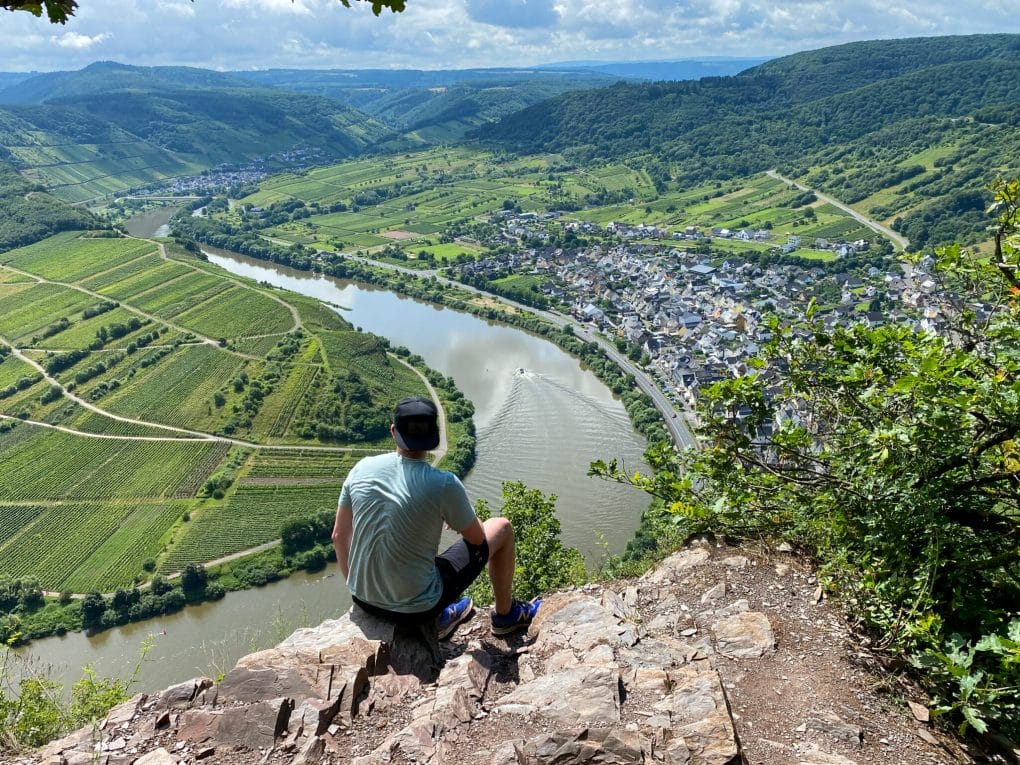This guide shares some helpful tips on the worst time to visit Germany so you can choose the best time for you!
After living in Germany for 3.5 years, I’ve become well acquainted with the seasons, holidays, and famous events that hit the nation. The weather and national events throughout the year can play a big part in your experience visiting Germany.
While what I consider the worst/best time to visit Germany undoubtedly differs from what you may consider the best/worst, transparency and a breakdown of the year can be helpful in your trip planning.
So here’s what you can expect at various points throughout the year so you can decide for yourself when the worst time to visit Germany is for you!
This post may contain affiliate links, meaning at no additional cost to you, if you click my links and make a purchase, I may earn a small commission. Learn more on my disclosure page. Thank you for your support!
Table of Contents
When is the Worst Time to Visit Germany
Major Events in Germany
Germany in Spring
Germany in Summer
Germany in Fall
Germany in Winter
Read more: Best Things to Buy in Germany

When is the Worst Time to Visit Germany?
That is a very nuanced question, and the answer largely depends on what you want from your trip to Germany. Generally, the best time to travel anywhere largely depends on significant events/festivals, current travel trends, and the time of year.
For example, I think one of the worst times to visit Germany’s major tourist attractions is during the summer when things are expensive and crowded. But there’s no denying that the summer brings the best weather and prettiest landscapes! It depends on your priorities.
Here’s a breakdown of what to expect with a trip to Germany each season to help you decide the worst and best time to visit Germany for you.
Events in Germany That Affect Travel
There are many events/festivals that impact travel a great deal. Depending on the event, travelers can expect increased hotel prices, increased flight prices, crowds, and attractions booking up quickly in advance.
If you’re not interested in the following events, festivals, or seasons, here are some events that you may view as the worst times to visit Germany because of increased prices and hectic crowds.
- Oktoberfest/Volksfest: Celebrated in Munich, Stuttgart, Bremen, Hannover, Berlin. The price increase is primarily in Munich and Stuttgart.
- Christmas markets/New Year: Christmas and NY bring massive numbers of people excited to celebrate the holiday’s German style.
- Carnival (Fasching or Karneval): Celebrated in February, particularly in the Rhineland and Cologne, with big, colorful parades and epic parties.
- Easter holiday: In the more Catholic regions, Germans celebrate many days of Easter, which can mean closures of stores and attractions.
- Regional festivals: Different parts of Germany have different micro-cultures and events to consider. For example, wine fest in the Mosel River Valley (end of summer), The International Film Fest in Berlin (February), etc.
- Peak tourist season: Brings more crowds and ups the cost obviously as well, which is often considered from May through September.
Read more: How to Spend One Day in Munich, Germany

What to Expect Each Season in Germany
Here’s a detailed breakdown of each season in Germany. Keep in mind that Germany is a massive country, and the average temperatures are just a glance. The climate can vary significantly between the north and south, east and west, and the Alps.
Visiting Germany in Spring (March, April, May)
Average spring temperatures in Germany:
- March: 53°F / 37°F, 10 days of rain
- April: 60°F / 42°F, 10 days of rain
- May: 68°F / 50°F, 12 days of rain
Pros + Cons of Visiting Germany in Spring
Pros: Lower crowds, lower prices, Almond and cherry blossoms, alpine flowers
Cons: Gloomy and cool weather, many holiday closures

Spring Holidays in Germany
German public holidays are another thing to keep in mind when planning a visit, as it can mean the closure of stores, restaurants, and attractions. Springtime in Germany sees many public holidays, especially for Easter. Easter brings parades and bonfires throughout Germany, as well as store closures.
Not every region of Germany celebrates every associated Easter holiday, but here’s a quick summary of key days to remember: Good Friday, Easter Sunday/Monday, Labor Day, Ascension Day, Whit Sunday/Monday, and Corpus Christi.
Best Places to Visit in Germany in Spring
A quick note about my best places to visit lists: I feel German cities are great to see any time of year. So, these recommendations are primarily focused on season-specific reasons that they’re great to visit!
Noteworthy places to visit in Germany in spring:
- Almond Blossom Festival: Held in Palatinate, typically in March and April. One of the best places for the festival is around the village of Gimmeldingen on the edge of the Haardt Mountains.
- Bonn and Hamburg: Cherry Blossom festivals are hosted in both cities, turning the streets vibrant shades of pink.
- Isle of Mainau on Bodensee: Famous floral gardens that bloom come springtime.
- Tulip fields: Tulips are predominantly a Dutch tradition, but there are some tulip fields to see in Germany too! They tend to be small and local, and are usually self-picking fields where you can cut your own for a fee per flower. Grevenbroich and Neuss are two places to see.
Read more: Pros and Cons of Living in Germany for Immigrants + Expats
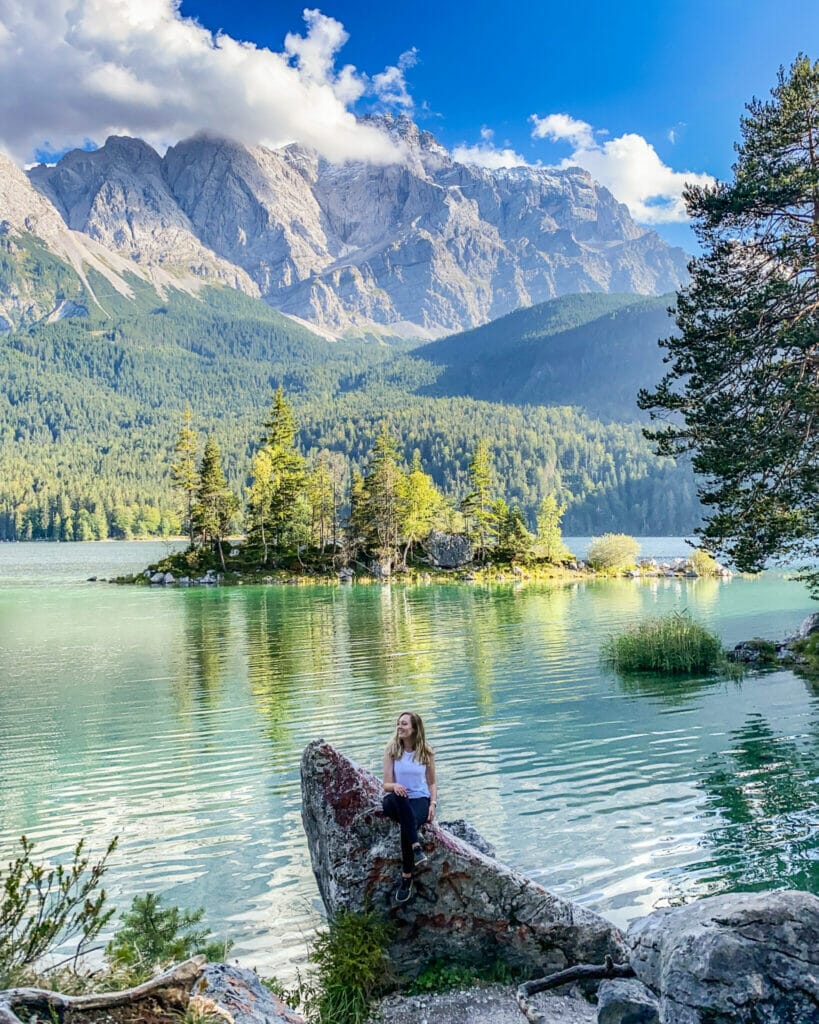
Visiting Germany in Summer (June, July, August)
Average summer temperatures in Germany:
- June: 74°F / 56°F, 11 days of rain
- July: 78°F / 59°F, 10 days of rain
- August: 78°F / 59°F, 10 days of rain
Pros + Cons of Visiting Germany in Summer
Pros: Best weather, green trees/vineyards, blue water, open hiking trails, swimming and beaches
Cons: Most crowds, highest flight and hotel prices

Summer Holidays in Germany
Summer only sees one holiday, Assumption Day, which is only celebrated in Bavaria and Saarland.
Best Places to Visit in Germany in Summer
A summary of the best places to visit during summer includes places to enjoy nature, the coast, and beaches. But honestly, anywhere in Germany is obviously great during the summer.
Here are some noteworthy shoutouts:
- Bavarian Alps: Garmisch, Zugspitze, Eibsee, etc.
- Painter’s Way and Devil’s Bridge: A mountain ridge in Eastern Germany and an iconic bridge over water.
- Rügen: Germany’s biggest island known for the stunning white chalk cliffs of Jasmund National Park.
Read more: Best Apps for Germany Travel and Life Abroad
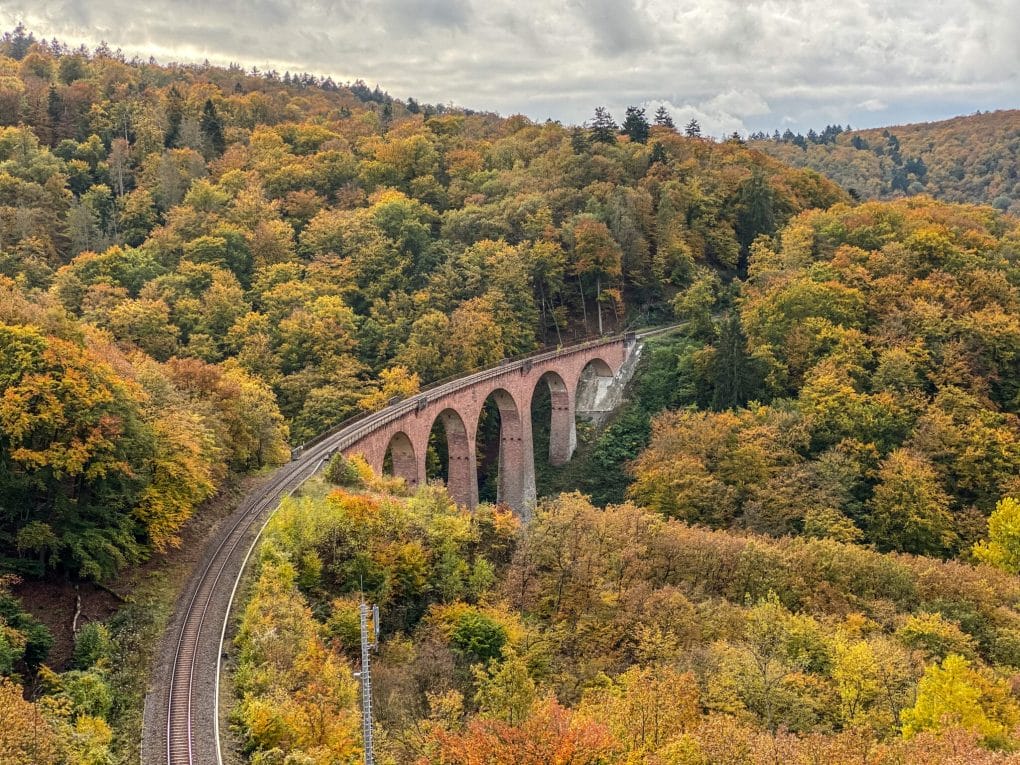
Visiting Germany in Fall (September, October, November)
Average fall temperatures in Germany:
- September: 70°F / 52°F, 8 days of rain
- October: 60°F / 45°F, 10 days of rain
- November: 49°F / 38°F, 10 days of rain
Pros + Cons of Visiting Germany in Fall
Pros: Pleasant weather, colorful trees, colorful vineyards, crowds beginning to lessen
Cons: Still crowded and can still be pricey, weather can be gloomy and unpredictable
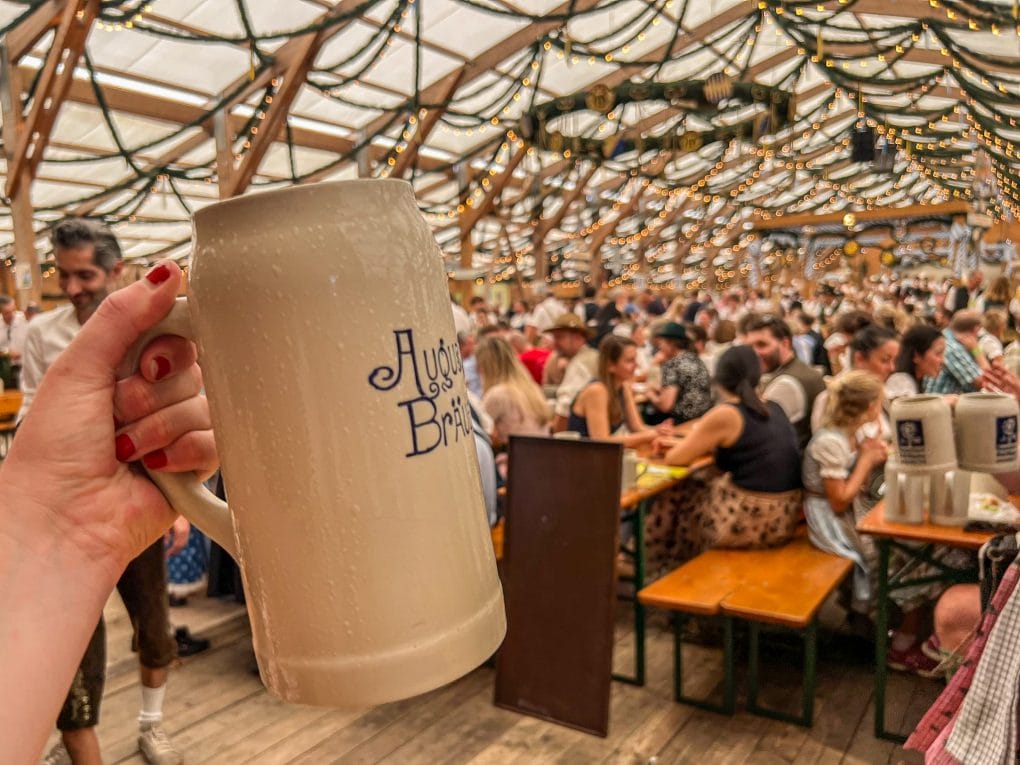
Fall Holidays in Germany
Fall sees a few more holidays, including the Day of German Unity, Reformation Day, All Saints’ Day, and Repentance Day. The religious holidays, again, are only celebrated in the Catholic regions of Germany.
Best Places to Visit in Germany in Fall
Like summer, anywhere in Germany is excellent to visit during the fall.
But here’s a snapshot of some extraordinary places to visit during fall:
- Mosel River Valley: Known for rolling vineyards that turn yellow and orange against the green landscape.
- Ludwigsburg Pumpkin Festival: A long running festival from August to December that hosts pumpkin art exhibits and pumpkin treats.
- Black Forest: Great for hiking in cooler temperatures.
- Devil’s Bridge: This iconic bridge over reflective water is known as one of the most beautiful places to visit in Germany during the fall.
- Geierlay Suspension Bridge: Germany’s longest suspension bridge across the Hunsrück mountain range offering a great view of fall colors.
- Munich Oktoberfest or Stuttgart Volksfest: Two epic beer festivals in Germany.
Read More: Best Things to Do in the Mosel River Valley, Germany
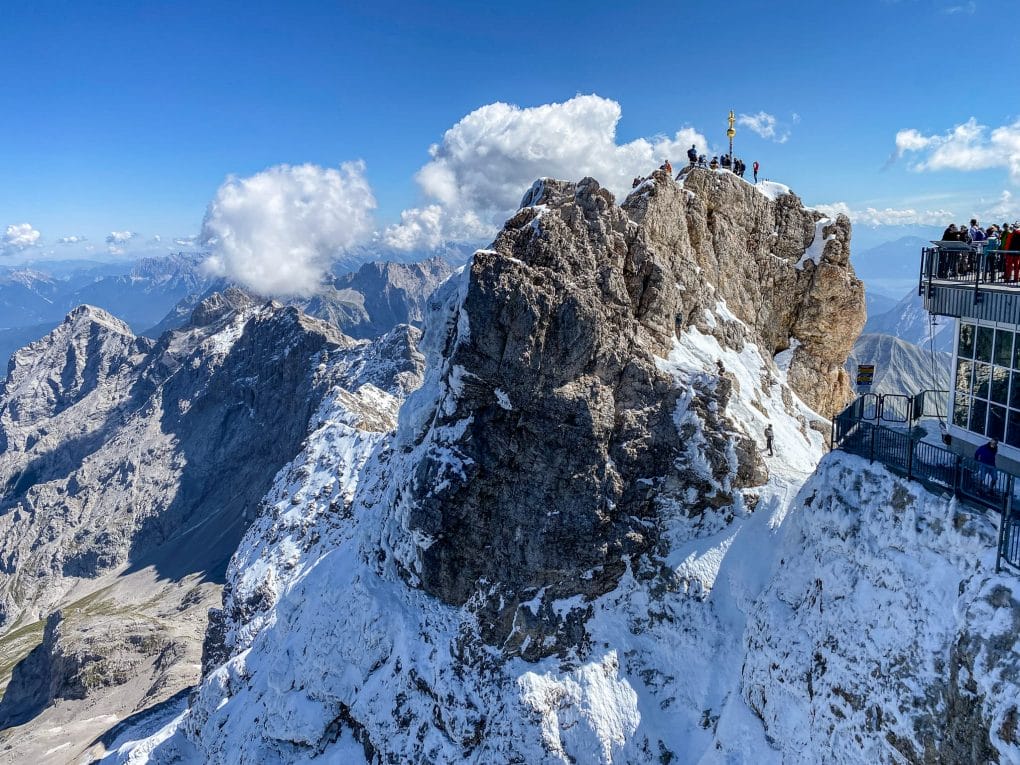
Visiting Germany in Winter (December, January, February)
Average winter temperatures in Germany:
- December: 43°F / 33°F, 10 days of rain
- January: 42°F / 31°F, 10 days of rain
- February: 45°F / 32°F, 9 days of rain
Pros + Cons of Visiting Germany in Winter
Pros: Lowest crowds and cheapest prices (except in December)
Cons: Coldest temperatures, cloudy and gloomy, gray
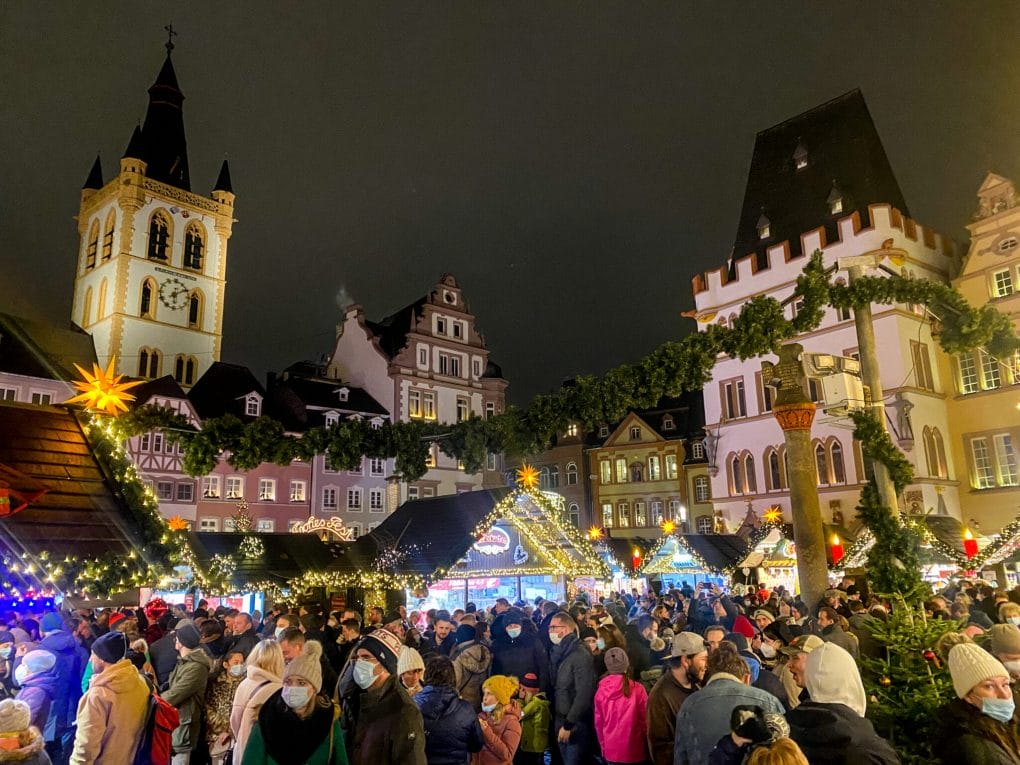
Winter Holidays in Germany
Winter in Germany sees some pretty holidays like the afternoon of Christmas Eve (when Germany celebrates Christmas), Christmas Day, the second day of Christmas, New Year’s Day, and Epiphany.
Best Places to Visit in Germany in Winter
If planning to visit Germany during the winter, prepare yourself for some chilly weather! But winter is great for snow sports in the mountains, Christmas markets, and low-key city explorations in January and February.
A summary of the best places to visit during winter includes:
- Best Christmas market destinations in Germany: Berlin, Cologne, Trier, Heidelberg, Munich, etc.
- Bavarian Alps: Although hiking isn’t always possible, the mountains are open for skiing and snowboarding, offering a glittering snowy wonderland that’s cold but exceptionally beautiful.
- Partnach Gorge: A gorge in Bavaria with towering cliffs that turn frozen in the winter.
- Baden-Baden: Germany’s premier spa destination known for traditional bathhouses and spa resorts, making for a great place to escape the cold.

